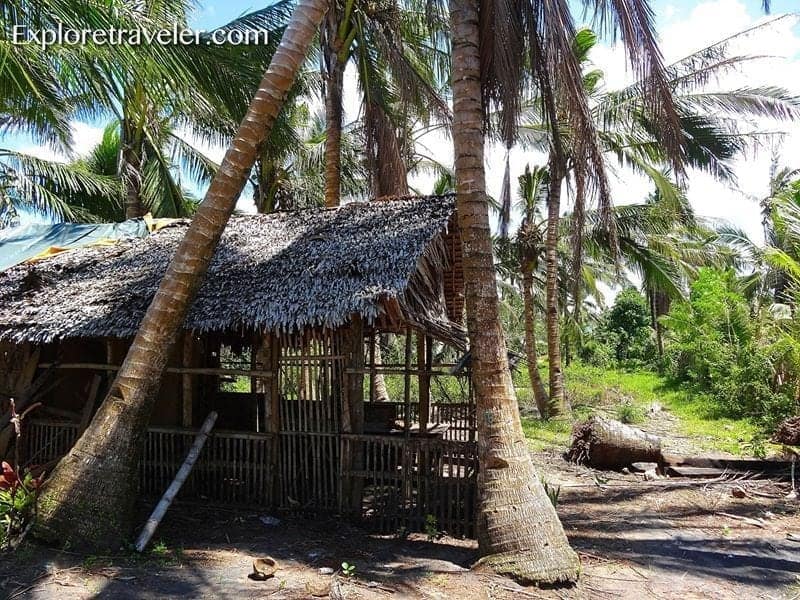Frequently Asked Questions
Where did Bahay Kubo originate?
Bahay Kubo, a traditional Filipino stilt house, originated in the Philippines. It is a symbol of Filipino culture and is known for its simplicity and indigenous design, often showcasing a variety of native materials used in construction.
What does Bahay Kubo mean?
"Bahay Kubo" is a traditional Filipino folk song that describes a simple nipa hut surrounded by various vegetables and fruits. This song is a colorful representation of rural Filipino life and showcases the diversity of plant life in the country.
Why is Bahay Kubo important?
Bahay Kubo is important due to its cultural significance in Filipino heritage, showcasing traditional architecture, sustainable living, and community values. It symbolizes simplicity, resilience, and unity with nature, embodying the essence of Filipino identity and history.
Why is Bahay Kubo elevated?
The Bahay Kubo is elevated to protect it from floods, pests, and provide ventilation. This traditional Filipino house design allows air to flow underneath, keeping the interior cool and less prone to moisture and pests.
When was Bahay Kubo invented?
The Bahay Kubo, a traditional Filipino house, does not have a specific inventor or creation date as it has been a part of indigenous Filipino architecture for generations, evolving over time to suit the needs and environment of its inhabitants.
What is Bahay Kubo made of?
Bahay Kubo is made of indigenous materials such as bamboo, nipa palm leaves, and wood. These natural resources are woven together to create a traditional Filipino house that is known for its simplicity, sustainability, and adaptability to the local climate and environment.
What is the purpose of Bahay Kubo?
The purpose of Bahay Kubo is to provide a traditional Filipino dwelling that is practical, sustainable, and reflective of the country's culture and climate. It serves as a versatile living space suitable for different environments and showcases Filipino resourcefulness and craftsmanship.
What is Bahay Kubo all about?
Bahay Kubo is a traditional Filipino folk song that describes the different vegetables and fruits found in a small nipa hut garden. It showcases the diversity of crops cultivated in the Philippine setting, highlighting the simplicity and richness of rural life in the country.
What does Bahay mean?
In Filipino culture, the word "Bahay" translates to "house" in English. Bahay symbolizes a place of shelter, comfort, and family. It embodies the concept of home, a sanctuary where one can truly be oneself and find peace and belonging.
How much to build a Bahay Kubo in the Philippines?
The cost of building a Bahay Kubo in the Philippines can vary depending on factors like location, materials used, and labor expenses. It is advisable to consult with local builders or contractors for accurate estimates based on your specific requirements and preferences.
Who invented Bahay Kubo?
The Bahay Kubo, commonly known as the nipa hut, is a traditional Filipino dwelling that does not have a single inventor. It's a collective product of indigenous communities, evolving over generations to suit the Philippine climate and lifestyle.
What does Bahay Kubo symbolize?
Bahay Kubo symbolizes simplicity, resilience, and harmony with nature in Filipino culture. Its design reflects a sustainable way of living through the use of indigenous materials and efficient space utilization. The Bahay Kubo represents the Filipino value of bayanihan, community unity, and a connection to the land.
What is the tempo of Bahay Kubo?
The tempo of Bahay Kubo is typically lively and upbeat, reflecting the song's cheerful and festive nature. This tempo is consistent throughout the song, creating a fun and energetic atmosphere that complements the joyful lyrics and melody.
What cultural significance does Bahay Kubo hold?
The Bahay Kubo holds significant cultural importance as a symbol of Filipino heritage and traditional architecture. Its design reflects unity with nature and showcases indigenous materials, emphasizing community and simplicity in everyday living. This iconic house represents resilience, resourcefulness, and the rich cultural heritage of the Philippines.
How does Bahay Kubo reflect Filipino heritage?
Bahay Kubo reflects Filipino heritage through its traditional architecture, showcasing the use of indigenous materials like bamboo and nipa palm. Its design symbolizes community, simplicity, and sustainability, embodying the Filipino value of bayanihan and connection to nature.
What materials traditionally construct Bahay Kubo?
Bahay Kubo, a traditional Filipino house, is typically constructed using natural materials like bamboo, nipa palm leaves, and wood. These materials are chosen for their availability, sustainability, and ability to provide natural ventilation in the tropical climate of the Philippines. The design showcases the ingenuity of Filipino architecture in utilizing locally-sourced resources for construction.
How has Bahay Kubo design evolved over time?
The Bahay Kubo design has evolved over time, incorporating modern materials and construction techniques while still preserving its traditional Filipino architectural roots. Changes include the use of metal roofs, concrete foundations, and larger windows for better ventilation, blending tradition with contemporary elements.
Which regions in the Philippines prefer Bahay Kubo?
The Bahay Kubo is a traditional Filipino house known and preferred in various regions of the Philippines. Its popularity extends to both rural and urban areas, showcasing the cultural significance and practicality of this vernacular architecture. From Luzon to Mindanao, communities appreciate the simplicity and resilience of the Bahay Kubo design, reflecting a deep-rooted connection to Filipino heritage.
How do Filipinos preserve Bahay Kubo traditions?
Filipinos preserve Bahay Kubo traditions through oral storytelling, passing down cultural practices through generations. They also continue to incorporate traditional materials and architectural designs in modern homes, ensuring the preservation of this cultural heritage for future generations.
What festivities feature Bahay Kubo prominently?
Bahay Kubo is prominently featured in Filipino festivities such as barrio fiestas, cultural events, and traditional celebrations like weddings and fiestas. It symbolizes Filipino culture, heritage, and community spirit.
How does climate influence Bahay Kubo architecture?
Climate greatly impacts Bahay Kubo architecture. The design incorporates features to combat heat and heavy rain, such as elevated floors for ventilation and thatched roofs for insulation. Materials like bamboo and nipa palm are used for their natural cooling properties, reflecting the need for sustainability and comfort in tropical settings.
What are common variations of Bahay Kubo?
Common variations of Bahay Kubo include the Nipa Hut, Ati-Atihan House, and the Ifugao House. These designs showcase unique regional influences and adaptations to environmental conditions across the Philippines, reflecting diverse cultural practices and architectural styles.
How are Bahay Kubo designs environmentally sustainable?
Bahay Kubo designs are environmentally sustainable due to their use of natural materials like bamboo and cogon grass, which are renewable and locally sourced. The design promotes natural ventilation, reducing the need for energy-consuming air conditioning systems. The elevated structure allows for flood protection and optimal airflow, minimizing the environmental impact of the building.
What modern adaptations exist for Bahay Kubo?
Modern adaptations for Bahay Kubo include eco-friendly materials, modular designs for easier construction, and integrating contemporary amenities while retaining the traditional Filipino architectural elements such as the steep roof, wide windows for ventilation, and elevated structure to prevent flooding.
How do Bahay Kubo structures withstand typhoons?
Bahay Kubo structures withstand typhoons due to their sturdy bamboo and thatched roof construction, which allows for flexibility and aerodynamics to minimize wind resistance. Additionally, the elevated design prevents flooding and the materials are lightweight yet durable enough to endure strong winds.
Are there Bahay Kubo-inspired structures elsewhere?
Yes, Bahay Kubo-inspired structures can be found in various places around the world. These structures pay homage to the traditional Filipino Bahay Kubo design, incorporating elements like bamboo, thatch roofs, and elevated floors, creating a fusion of local architecture with modern influences.
What stories or legends involve Bahay Kubo?
Stories and legends involving Bahay Kubo are rich in Filipino culture. They often center around the simplicity and beauty of rural life, highlighting themes of community, resourcefulness, and the connection to nature. These narratives celebrate the Filipino spirit and the importance of home and family.
How is Bahay Kubo depicted in Filipino art?
In Filipino art, the Bahay Kubo is often portrayed as a symbol of traditional Filipino architecture and culture. Artists depict the Bahay Kubo in various mediums, showcasing its unique design with a thatched roof and elevated structure. It represents a connection to the rural landscape and the simplicity of Filipino way of life.
What role does Bahay Kubo play in rural life?
Bahay Kubo serves as the traditional Filipino rural dwelling, showcasing simplicity, sustainability, and cultural heritage. It symbolizes community ties, agricultural practices, and harmonious living with nature, reflecting the essence of rural life in the Philippines.
How do urban Filipinos perceive the Bahay Kubo?
Urban Filipinos often view the Bahay Kubo as a symbol of traditional and cultural heritage, representing simplicity and authenticity amidst modernization and urbanization. It is valued for its connection to the countryside and the Filipino way of life, evoking nostalgia and a sense of national identity.










Comments are closed.